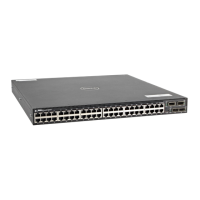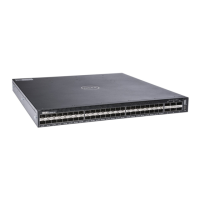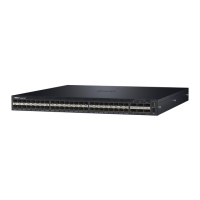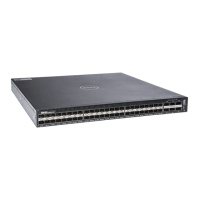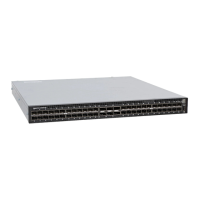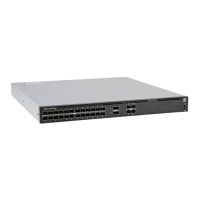Command
History
This guide is platform-specific. For command information about other platforms,
refer to the relevant Dell Networking OS Command Line Reference Guide.
The following is a list of the Dell Networking OS version history for this command.
Version 9.4.
(0.0)
Added support for VRF.
Version 9.0.2.0 Introduced on the S6000.
Version
8.3.19.0
Introduced on the S4820T.
Version 8.3.11.1 Introduced on the Z9000.
Version 8.3.7.0 Introduced on the S4810.
Version 7.8.1.0 Added support for Multi-Process OSPF.
Version 7.6.1.0 Introduced on the S-Series.
Version 7.5.1.0 Introduced on the C-Series.
pre-Version
6.1.1.1
Introduced on the E-Series.
Related
Commands
show ip ospf database — displays OSPF database information.
show ip ospf database opaque-area
Display the opaque-area (type 10) LSA information.
S4810
Syntax
show ip ospf [process-id | vrf vrf-name] database opaque-area
[link-state-id] [adv-router ip-address]
Parameters
process-id Enter the OSPF Process ID to show a specific process. If no
Process ID is entered, command applies only to the first
OSPF process.
vrf vrf-name Enter the keyword vrf followed by the name of the VRF to
view opaque-area LSA information corresponding to the
OSPF process that is tied to a specific VRF.
link-state-id (OPTIONAL) Specify LSA ID in dotted decimal format. The
LSA ID value depends on the LSA type, and it can be one of
the following:
• the network’s IP address for Type 3 LSAs or Type 5 LSAs
• the router’s OSPF router ID for Type 1 LSAs or Type 4
LSAs
• the default destination (0.0.0.0) for Type 5 LSAs
1212
Open Shortest Path First (OSPFv2 and OSPFv3)
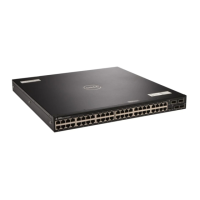
